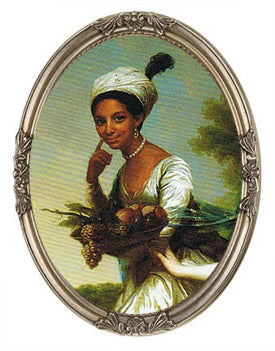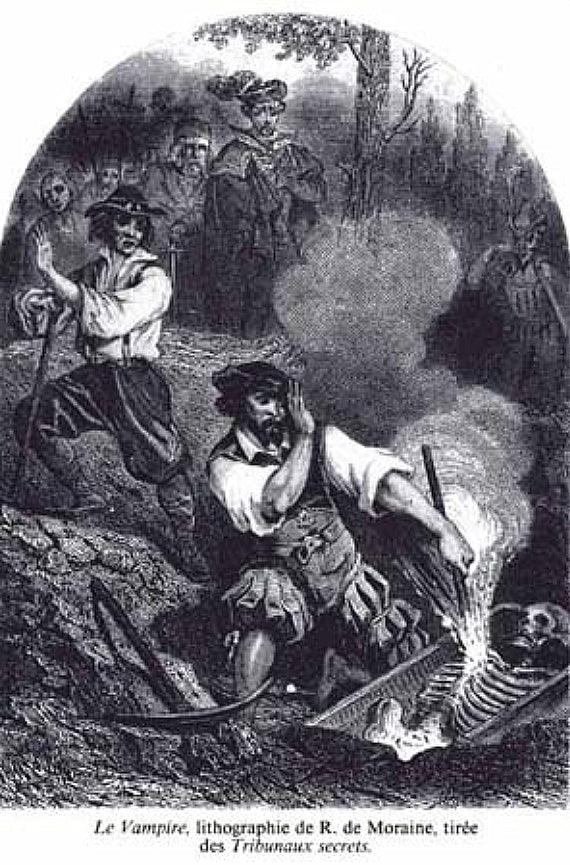Create Tambour Work Embroidery
Tambour work was a popular form of "quick" embroidery used on gowns, lace shawls and scarves and other projects, particularly during the mid 1700's to mid 1800's, when automated machines took over the work of skilled seamstresses and the delicate patterns produced fell from fashion. To begin, one worked a basic chain stitch on the top of the fabric, using a specially made tambour needle.
 The patterns created varied from simple white on white borders and patterns, like this lace scarf:
The patterns created varied from simple white on white borders and patterns, like this lace scarf:
 ...to complex collages of color and texture as displayed on this gown:
...to complex collages of color and texture as displayed on this gown:
 To begin you will need a tambour frame, or at the very least a mid sized embroidery hoop, embroidery thread or tambour thread, and a tambour needle. All of these supplies can be easily sourced, anywhere from your local department store or Amazon.com.
Finally, you will need to decide on your pattern. Patterns could be as simple as a flight of fancy, or deliberately copied, like these period designs in the Victoria & Albert collection. The patterns could be fastened to the back of the fabric, or traced onto the fabric itself for ease of use.
To begin you will need a tambour frame, or at the very least a mid sized embroidery hoop, embroidery thread or tambour thread, and a tambour needle. All of these supplies can be easily sourced, anywhere from your local department store or Amazon.com.
Finally, you will need to decide on your pattern. Patterns could be as simple as a flight of fancy, or deliberately copied, like these period designs in the Victoria & Albert collection. The patterns could be fastened to the back of the fabric, or traced onto the fabric itself for ease of use.
 Hand position for Tambour work. From the Encyclopedia of Needlework
Many tutorials are available online, however, I find that the posts and videos by Mary Corbet, of Needlenthread.com are particularly helpful.
If you choose to create a piece of lace, like the one Mary is working on in the video (the net makes seeing what you are doing particularly helpful) or like our first image, then try hooping a piece of netting over a piece of muslin in your hoop. Carefully cut away the muslin backing so that only a narrow edge is left inside your hoop. The addition of the muslin in the actual hoop will help stabilize your netting and keep it from stretching.
On her website, Mary offers additional help through the suggestion of three titles to get you started. One of them, 18 Century Embroidery Techniques, by Gail Marsh devotes a section of the book to tamboured chain stitch.
Hand position for Tambour work. From the Encyclopedia of Needlework
Many tutorials are available online, however, I find that the posts and videos by Mary Corbet, of Needlenthread.com are particularly helpful.
If you choose to create a piece of lace, like the one Mary is working on in the video (the net makes seeing what you are doing particularly helpful) or like our first image, then try hooping a piece of netting over a piece of muslin in your hoop. Carefully cut away the muslin backing so that only a narrow edge is left inside your hoop. The addition of the muslin in the actual hoop will help stabilize your netting and keep it from stretching.
On her website, Mary offers additional help through the suggestion of three titles to get you started. One of them, 18 Century Embroidery Techniques, by Gail Marsh devotes a section of the book to tamboured chain stitch.
 The patterns created varied from simple white on white borders and patterns, like this lace scarf:
The patterns created varied from simple white on white borders and patterns, like this lace scarf:
 ...to complex collages of color and texture as displayed on this gown:
...to complex collages of color and texture as displayed on this gown:
 To begin you will need a tambour frame, or at the very least a mid sized embroidery hoop, embroidery thread or tambour thread, and a tambour needle. All of these supplies can be easily sourced, anywhere from your local department store or Amazon.com.
Finally, you will need to decide on your pattern. Patterns could be as simple as a flight of fancy, or deliberately copied, like these period designs in the Victoria & Albert collection. The patterns could be fastened to the back of the fabric, or traced onto the fabric itself for ease of use.
To begin you will need a tambour frame, or at the very least a mid sized embroidery hoop, embroidery thread or tambour thread, and a tambour needle. All of these supplies can be easily sourced, anywhere from your local department store or Amazon.com.
Finally, you will need to decide on your pattern. Patterns could be as simple as a flight of fancy, or deliberately copied, like these period designs in the Victoria & Albert collection. The patterns could be fastened to the back of the fabric, or traced onto the fabric itself for ease of use.
 Hand position for Tambour work. From the Encyclopedia of Needlework
Many tutorials are available online, however, I find that the posts and videos by Mary Corbet, of Needlenthread.com are particularly helpful.
If you choose to create a piece of lace, like the one Mary is working on in the video (the net makes seeing what you are doing particularly helpful) or like our first image, then try hooping a piece of netting over a piece of muslin in your hoop. Carefully cut away the muslin backing so that only a narrow edge is left inside your hoop. The addition of the muslin in the actual hoop will help stabilize your netting and keep it from stretching.
On her website, Mary offers additional help through the suggestion of three titles to get you started. One of them, 18 Century Embroidery Techniques, by Gail Marsh devotes a section of the book to tamboured chain stitch.
Hand position for Tambour work. From the Encyclopedia of Needlework
Many tutorials are available online, however, I find that the posts and videos by Mary Corbet, of Needlenthread.com are particularly helpful.
If you choose to create a piece of lace, like the one Mary is working on in the video (the net makes seeing what you are doing particularly helpful) or like our first image, then try hooping a piece of netting over a piece of muslin in your hoop. Carefully cut away the muslin backing so that only a narrow edge is left inside your hoop. The addition of the muslin in the actual hoop will help stabilize your netting and keep it from stretching.
On her website, Mary offers additional help through the suggestion of three titles to get you started. One of them, 18 Century Embroidery Techniques, by Gail Marsh devotes a section of the book to tamboured chain stitch.

